Vancouver TransLink releases Customer Experience Action Plan
-- bus stops, shelters, and transit stations are marketing touchpoints for transit
-- transit's "killer app" is speed and convenience and ideally cost over competitive modes
-- to be most successful transit needs to be offered within an integrated product-service system
-- transit is a mass service and likely to be less comfortable compared to personal mobility delivered by an automobile
So transit ought to be positioned and provided in a manner that is at some level, reasonably competitive with other modes.
I've mentioned the Liverpool--Merseytravel--rail system as a standout in terms of design, branding, and the provision of highly visible customer service stations at main train and bus stations. In the rail hubs, these include restroom facilities.
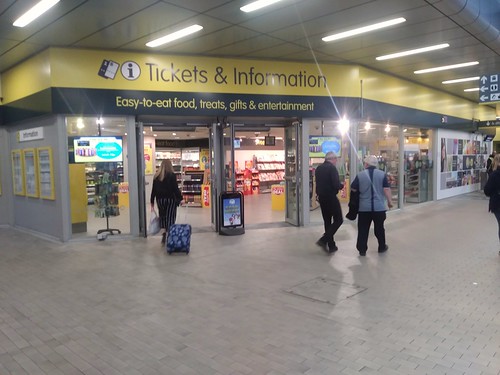
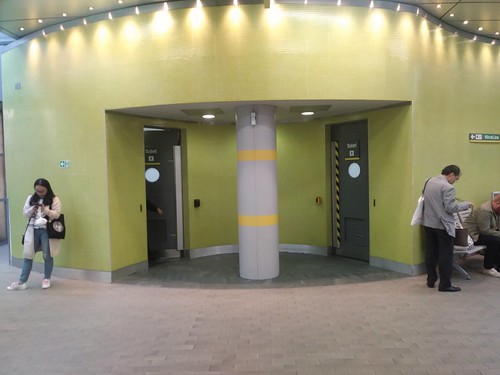
Restrooms in transit facilities in the US tend to either not be offered (WMATA has restrooms but you have to get an attendant to let you in) or grim.
Translink, the transit agency for Metro Vancouver, has already been implementing various improvements to the customer experience, such as signage and digital information improvements, wi-fi across the system, air conditioning, and last December, approving a program for installing restrooms at major hubs.
This week, Translink released the 2019-2025 Customer Experience Action Plan, which outlines 64 actions across three areas: (1) services; (2) information; and (3) people.
Focusing on all elements of the customer experience, and repositioning the organization around "putting customers first" are pathbreaking for transit agencies in North America.
The previous decision to add restrooms reflects a greater focus on ensuring the quality of the customer experience to increase satisfaction and ridership. From "TransLink approves introduction of washrooms into the public transit system," Daily HIve Vancouver:
According to TransLink’s research, public transit authorities in Toronto, Boston, and Edmonton provide washroom facilities for customers, and they use a mixed-approach of implementation and operations. Other major agencies in Washington DC, Los Angeles, and Chicago do not provide facilities.These pages from the Customer Experience Plan "jumped out at me" (along with the four pages of actions, some of which have already been completed).
A survey conducted by the public transit authority earlier this year found that 72% of the respondents indicated washroom facilities would improve the transit experience, and over 20% of daily transit users who responded said they had adjusted their transit travel behaviour at least weekly due to the lack of washrooms.
Approximately a quarter of respondents stated they would use the transit system more often if washrooms were more widely available.
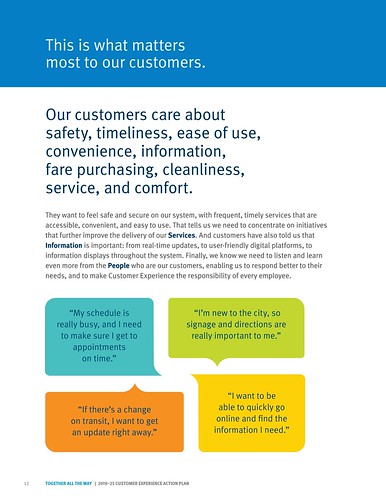
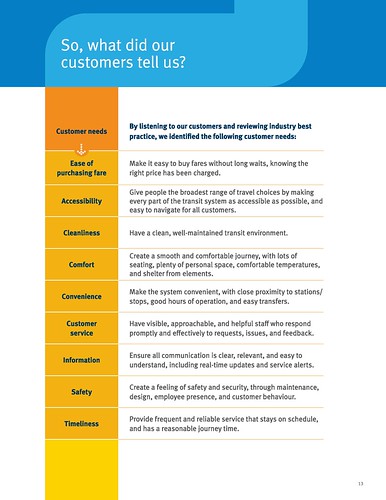

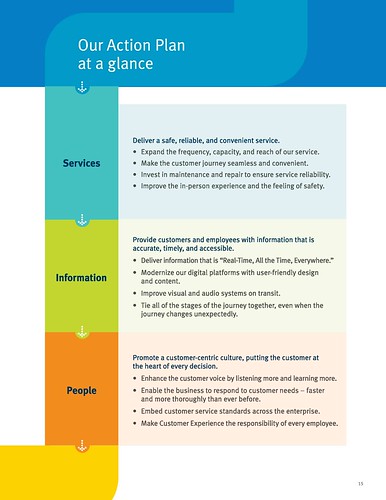
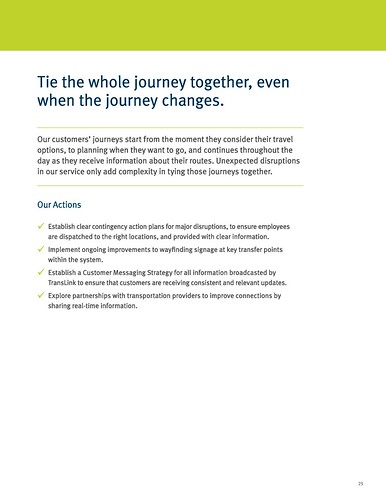

Given the increased competition for riders pre-disposed to use sustainable modes ("I finally figured out why mobility services are buying other mobility services: they're acquiring customers already familiar with smart mobility;" Uber wants to compete with public transit. These experts are horrified," CNN), transit agencies are going to have to work harder to compete for riders, and to maintain ridership in the face of increased competition, competition that frequently is subsidized by venture capital and leadership more accustomed to acting quickly.
Otherwise, it reminds me of some of my reservations about "open government" and how becoming "more digital" doesn't necessarily make a government more citizen-centric ("All the talk of e-government, digital government, and open source government is really about employing the design method").
Note that while it is not stated directly, the point in this entry, "Branding's not all you need for transit," about "treating transit as a design product" subsumes the point about putting customers first and having a defined Customer Experience Plan in this point:
Within an integrated transit organization and delivery system, the second element is treating transit as "a design product" and ensuring that each and every element within the system of providing transit and mobility services is designed to be effective, efficient, successful, powerful and connected.TransLink must be doing something right. They are one of the few transit agencies in North America that is adding riders rather than losing them.
A definite shout out is due SWCA--Sheldan Wood Creative Associates--the design and communications firm that did the design for the planning document. SWCA produces a wide variety of design products for TransLink including infographics.
While in the past I have mentioned TransLink planning documents as North American best practice, in particularly biking and park and ride, as well as general transit planning--of course, the City of Vancouver is a leader in urban planning especially urban design too--perhaps in terms of the three points I make in "Branding's not all you need for transit" in terms of:
…. a comprehensive approach [is required] for the design and delivery of successful transit as a system. Delivering transit as an integrated system is what will increase transit ridership in substantive ways.TransLink should also be touted.
The first element is an integrated transit/mobility system a la the German transport association model. That means that at the regional scale, all the transit and mobility agencies are part of one overarching organization focused on integrating services, planning, routes, and fares.
Within an integrated transit organization and delivery system, the second element is treating transit as "a design product" and ensuring that each and every element within the system of providing transit and mobility services is designed to be effective, efficient, successful, powerful and connected.
the third element, tying it all together, is an integrated branding system. Branding is more than a font or a logo. It includes design within every element of the system, in all its aspects, from signage to liveries for trains and buses, routes, stations and stops, a combined call center, wayfinding systems, etc.
Labels: customer service, design method, graphic design, integrated public realm framework, provision of public services, transportation infrastructure, transportation planning, urban design/placemaking




3 Comments:
Thanks for sharing, nice article..
Hello everyone..Welcome to my free masterclass strategy where i teach experience and inexperience traders the secret behind a successful trade.And how to be profitable in trading I will also teach you how to make a profit of $12,000 USD weekly and how to get back all your lost funds feel free to email me on(brucedavid004@gmail.com) or whataspp number is +22999290178
Thanks for sharing.
Boston Logan Car Service
Logan Car Service
Boston Car Service
Post a Comment
<< Home